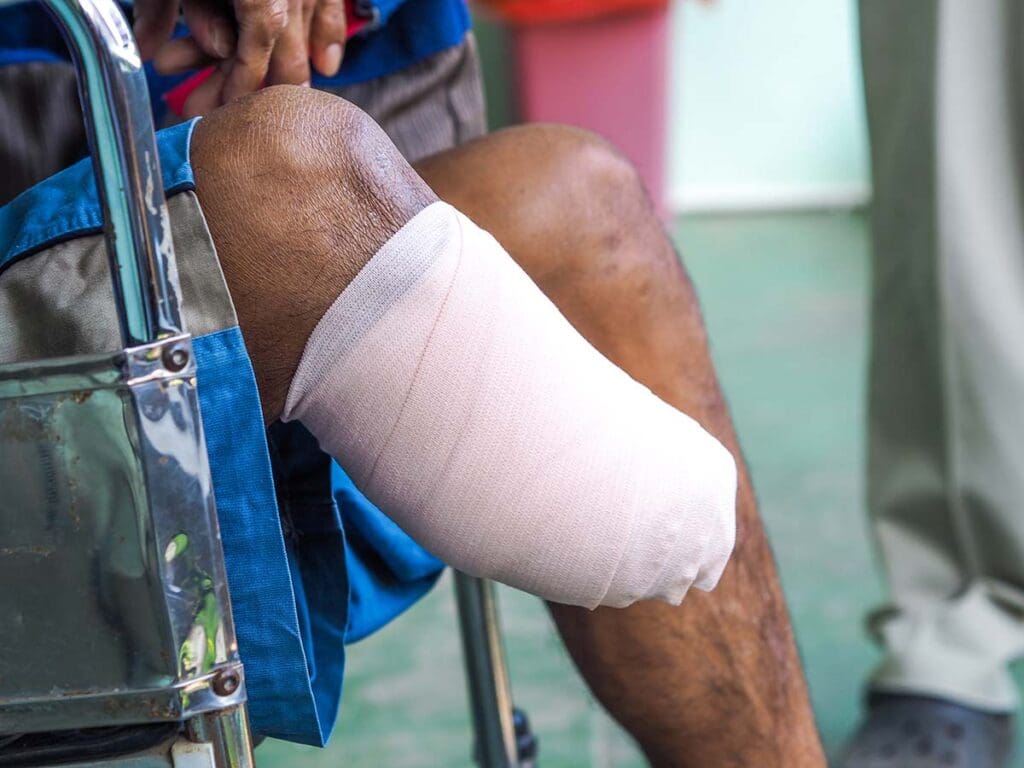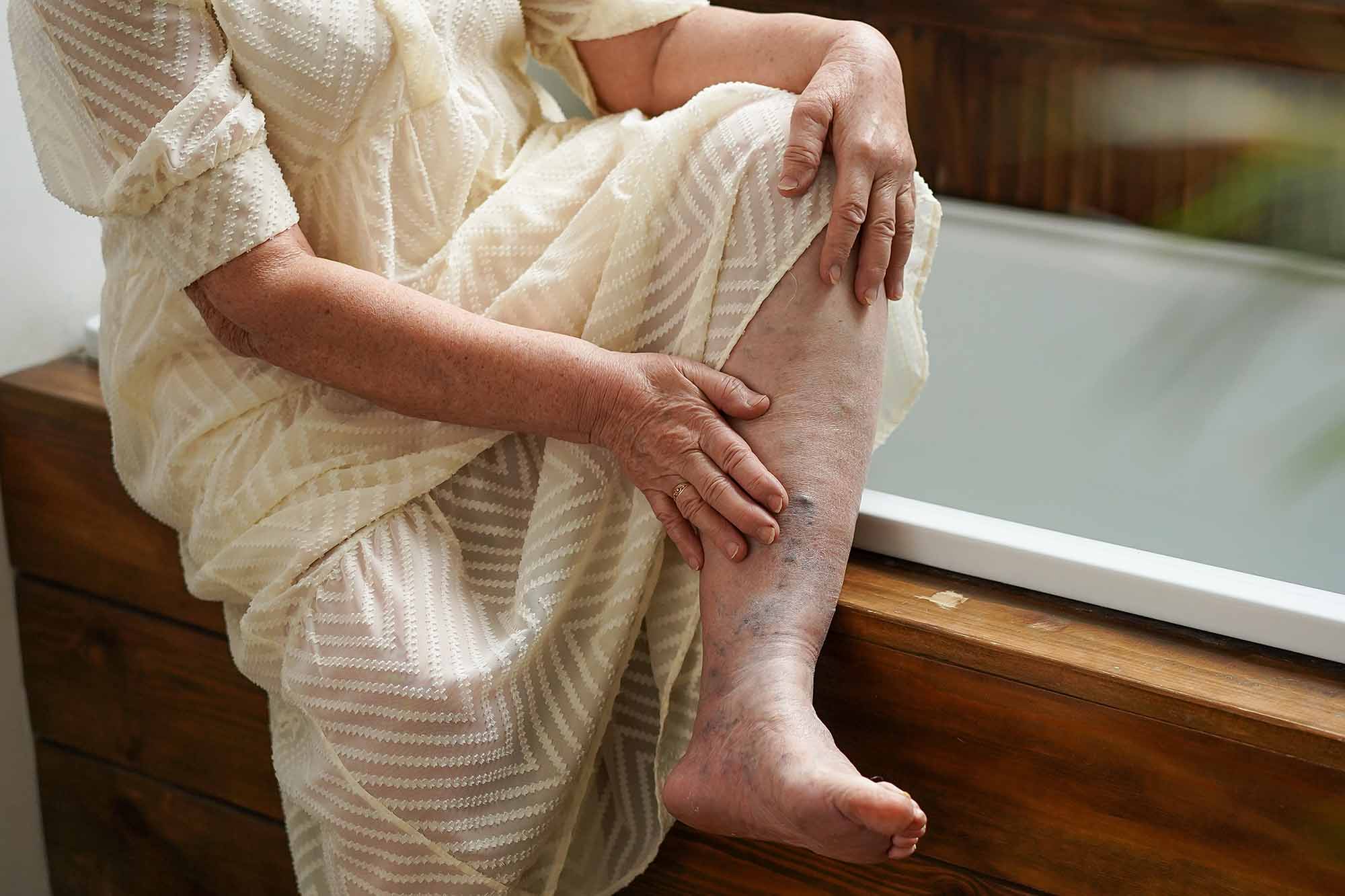Steps to Prevent Diabetic Foot Complications
Prevent the amputation of a diabetic foot
Preventing amputation of a diabetic foot is crucial as it can significantly improve the quality of life for individuals with diabetes. Diabetes can lead to nerve damage (diabetic neuropathy) and reduced blood circulation in the feet, making them vulnerable to infections and slow-healing wounds, which may eventually require amputation if not properly managed.
Here are some essential steps to prevent diabetic foot complications:
- Regular foot care: Inspect your feet daily for any cuts, blisters, redness, swelling, or sores. If you have difficulty examining your feet, ask a family member or caregiver for assistance. Early detection and treatment of foot issues can prevent them from worsening.
- Manage blood glucose levels: Keep your blood sugar levels within the target range as advised by your healthcare provider. Consistent blood glucose control can minimize nerve damage and improve blood flow to the feet.
- Follow a healthy diet: Adopt a balanced diet that includes fruits, vegetables, whole grains, lean proteins, and healthy fats. Limit your intake of sugary and processed foods to help manage your blood sugar levels.
- Regular exercise: Engage in physical activity, such as walking, swimming, or biking, as it can improve circulation and help control blood sugar levels. Consult with your healthcare provider before starting any exercise program.
- Quit smoking: Smoking can further damage blood vessels and reduce circulation, making foot problems more severe. Quitting smoking can significantly improve your overall health and reduce the risk of diabetic foot complications.
- Proper footwear: Wear comfortable, well-fitting shoes that provide adequate support and cushioning for your feet. Avoid shoes that cause friction, pressure, or tightness. Diabetic shoes or custom orthotics may be recommended if you have foot deformities or special needs.
- Avoid walking barefoot: Always wear socks and shoes to protect your feet from injuries, infections, and temperature extremes.
- Foot hygiene: Wash your feet daily with warm water and mild soap, then pat them dry gently, especially between the toes. Moisturize your feet to prevent dry skin and cracking, but avoid applying lotion between the toes.
- Trim toenails properly: Trim your toenails straight across and avoid cutting them too short to prevent ingrown toenails.
- Regular check-ups: Schedule regular foot examinations with a healthcare provider experienced in diabetic foot care. They can identify potential issues early and provide appropriate treatment.
- Diabetes education: Learn about diabetes management and foot care from your healthcare team, including your doctor, diabetes educator, or podiatrist.

Take Proactive Steps to Protect Your Feet
If you notice any changes in your feet or experience any foot-related issues, seek medical attention immediately. Taking proactive steps and adhering to a comprehensive foot care routine can go a long way in preventing diabetic foot complications and reducing the risk of amputation.
Always consult your healthcare provider for personalized advice and guidance based on your specific health needs. At SCMSC we offer a collaborative approach with treatment by multiple specialties including vascular, podiatry and wound care.

Mortality & Morbidity Related to Amputation
Removal of a limb or amputation is a life altering surgery. At SCMSC we use every limb saving measure to prevent amputation because of the risks associated with such surgery. Both mortality and morbidity can be associated with amputation, and these risks depend on various factors such as the patient’s overall health, the reason for the amputation, the level of the amputation, and the quality of post-operative care.
Here’s an overview of the mortality and morbidity related to amputation:
Mortality
Mortality refers to death resulting from the amputation procedure or related complications. The risk of mortality associated with amputation can vary significantly depending on factors such as the patient’s age, overall health, the reason for amputation, and the presence of other medical conditions.
- In general, amputations are considered major surgeries and carry inherent risks. Mortality rates for amputation procedures have improved over the years due to advances in surgical techniques, anesthesia, and post-operative care.
- However, older adults and those with multiple health issues, particularly cardiovascular disease and diabetes, may have a higher risk of mortality after amputation.
- Patients who undergo emergency amputations due to traumatic injuries may also face a higher risk of mortality compared to elective procedures.
Morbidity
Morbidity refers to complications and adverse outcomes related to amputation. These can include both short-term and long-term complications.
- Short-term morbidity may include surgical site infections, wound healing problems, and adverse reactions to anesthesia.
- Long-term morbidity can involve issues with wound healing, phantom limb pain (sensation of pain in the absent limb), neuromas (nerve tissue growth), joint contractures, and psychological challenges such as depression and anxiety.
- Individuals who undergo lower limb amputations, such as below-the-knee or above-the-knee amputations, may face challenges in adjusting to prosthetic devices and require rehabilitation and physical therapy to regain mobility.

We Strive to Prevent Amputation
It is essential to note that while amputation is sometimes necessary to save a person’s life or prevent the spread of severe infection or disease, it is also critical to explore all other treatment options before considering amputation. Preventive measures, early intervention, and aggressive management of conditions such as diabetes and peripheral vascular disease can help reduce the likelihood of amputation.
Moreover, post-operative care and rehabilitation play a vital role in minimizing complications and promoting better outcomes for individuals who have undergone amputation. A multidisciplinary approach involving surgeons, wound care specialists, physical therapists, occupational therapists, and psychological support can significantly improve the overall quality of life for amputees and reduce morbidity associated with amputation. Which is why it’s important to research the credentials of the physician and choose a board certified surgeon that specializes in vascular disease.
Most recently, there has been controversy in the limb salvage community around unnecessary peripheral procedures or repeated interventions, as well as, what specialty is most qualified to treat these patients. The Society for Vascular Surgery (SVS) released a statement in response to a recent New York Times article on this topic. SVS states in their response that, “there is only one primary specialty in medicine comprehensively educated, trained and tested to provide the full spectrum of evidence-based care to vascular patients, ranging from medical management to minimally invasive procedures, to open surgery; that specialty is vascular surgery.”
Read the full response:
https://vascular.org/news-advocacy/articles-press-releases/svs-response-new-york-times-article-overuse-interventions






